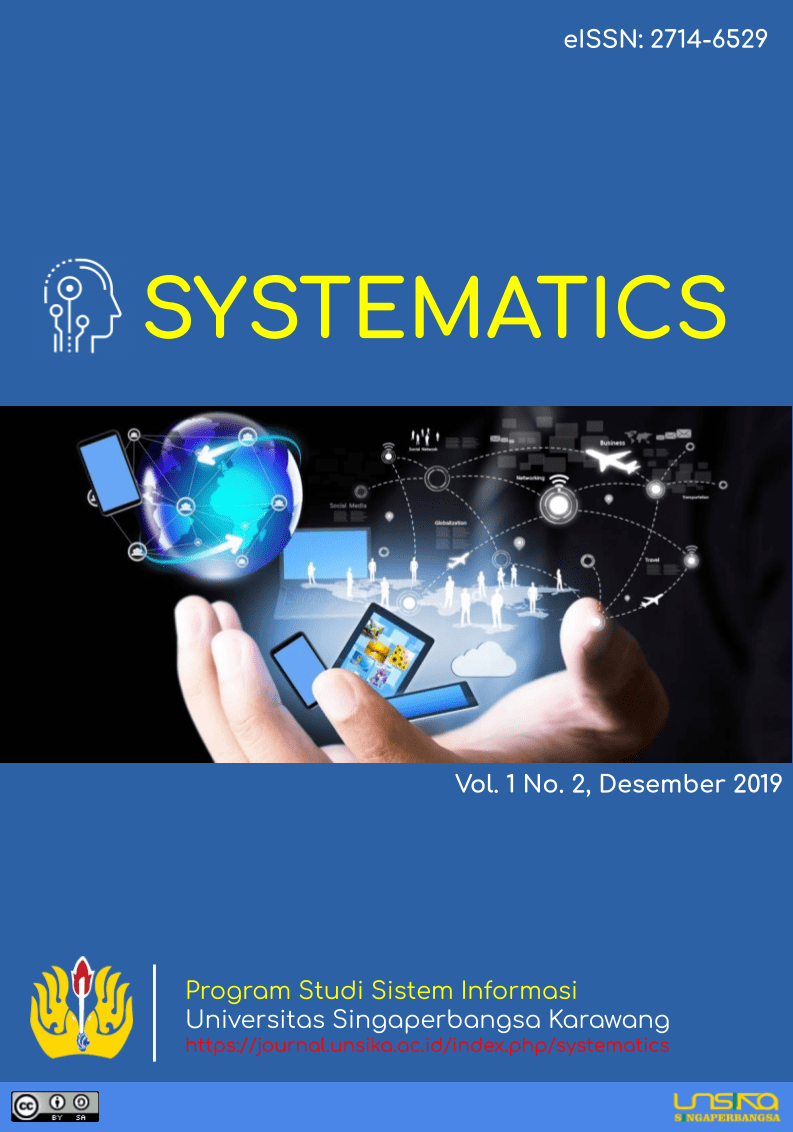Penggunaan Aplikasi Content Management System (CMS) Untuk Pengembangan Bisnis Berbasis E-commerce
DOI:
https://doi.org/10.35706/sys.v1i2.2076Abstract
Manfaat penelitian adalah Agar warung atau kios, tidak hanya dikenal mengandalkan pembeli yang lewat atau tetangga saja dan dapat membuat aplikasi penjualan secara online untuk warung atau kios yang ada di masyarakat, khususnya di Kabupaten Karawang. Dalam penelitian ini, metode yang digunakan adalah metode SDLC dengan model waterfall. Dari hasil penelitian ini diharapkan bisa meningkatkan penjualan produk yang dijual di warung atau kios dengan berbasis online atau e-commerce.Downloads
References
Carvino I.H., Pengembangan Aplikasi CMS E-Commerce dengan PHP-CI untuk Mempermudah Penjualan dan Pembayaran Online. ISNN: 2303-1425 Vol.04/No.01/2016.
Heryana, N. (2017). Penerapan Knowledge Management System Berbasis Content Management di SMKN 1 Pakisjaya. Incomtech, 6(1), 67–73.
Iqbal,S., Rekayasa Content Management System (Cms) Joomla Berbasis Open Source Untuk Pengembangan Sistem Informasi Berbasis Online. Jurnal Informatika. Vol 3, No. 1, Januari 2009. desember 2016/17:01:05).
Margono S. Drs. 2007. Metologi Penelitian Pendidikan Komponen MKDK. PT. Rineka Cipta, Jakarta
Muhammad T.S.,Dwi S., Aplikasi Content Management System (CMS) Opencart Sebagai Media Penjualan Pada Home Industry Tiga Saudara Plastik Malang. ISSN: 2407-3741.
Pressman, Roger S. (2001). Software Engineering A Practitioner's Approach Fifth Edition. New York: Mc Graw Hill Higer Education.
Sikumbang, Andy (2006). Mastering CMS dengan Mambo/Joomla . Jakarta : PT. Elex Media Komputindo .
Downloads
Published
How to Cite
Issue
Section
License
Copyright (c) 2019 SYSTEMATICS

This work is licensed under a Creative Commons Attribution-ShareAlike 4.0 International License.
Authors who publish with this journal agree to the following terms:
- Authors retain copyright and grant the journal right of first publication with the work simultaneously licensed under a Creative Commons Attribution-ShareAlike 4.0 International License. that allows others to share the work with an acknowledgement of the work's authorship and initial publication in this journal.
- Authors are able to enter into separate, additional contractual arrangements for the non-exclusive distribution of the journal's published version of the work (e.g., post it to an institutional repository or publish it in a book), with an acknowledgement of its initial publication in this journal.
- Authors are permitted and encouraged to post their work online (e.g., in institutional repositories or on their website) prior to and during the submission process, as it can lead to productive exchanges, as well as earlier and greater citation of published work (See The Effect of Open Access).







